Updates & Blog
Arbor Day 2023: Celebrating the Iconic Trees of the U.S. South
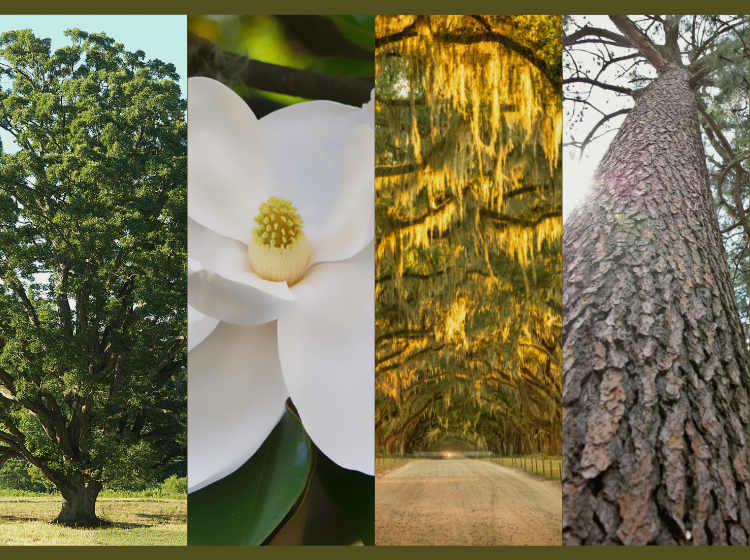
The southeastern United States is well-known for its lush forests and abundant wildlife, with a rich cultural and historical heritage associated with its trees – not to mention their economic and ecological importance. From the sturdy white oak trees in my home state of Tennessee to the towering longleaf pines of the coastal plains, southern trees and forests have played an integral role in shaping what it means to be “the South.” This year for National Arbor Day, which is celebrated annually on the last Friday in April, the Southern Group of State Foresters is highlighting some of the South’s most iconic tree species.
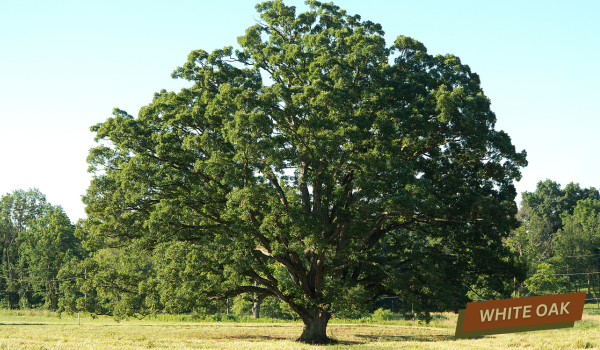
White Oak
White oak plays an important role in the ecology, economy and culture of the southern United States. It is a keystone species, meaning that it supports and helps define the entire ecosystem within which it grows. Species which rely on white oak include a variety of plants and animals such as black cherry, bear huckleberry, white-tailed deer, wild turkey and northern long-eared bat.
The importance of the white oak, however, extends well beyond its vital ecosystem benefits, playing an integral role in our communities, culture and economy. Throughout history, white oak has been a symbol of strength and longevity, having even been used in the construction of the USS constitution, which was nicknamed “Old Ironsides” due to the strength of its white oak hull. The tree’s high-quality wood makes it ideal for making furniture, flooring and barrels for aging whiskey and wine due to its tight grain structure. It is considered by some to be the best wood of all the white oak species.
White oak remains a relatively common tree species in the southeastern United States but it has been impacted by pests and diseases such as spongy moth and oak decline. Habitat loss due to land conversion and development also continue to impact white oak populations in some areas. State forestry agencies and our partners, like the U.S. Forest Service and the White Oak Initiative, are working to ensure the continued health and vitality of this important species.
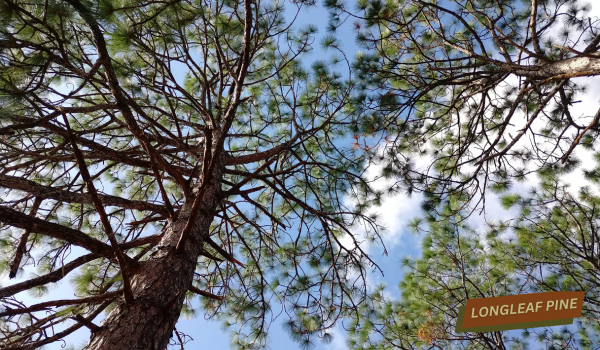
Longleaf Pine
One of the most beloved trees in the southeast is the longleaf pine. Historically, longleaf pine’s strong, straight trunks and sap made them ideal for shipbuilding, railroad ties, telegraph poles and naval stores. Prior to European colonization, these trees were the dominant species in the South, covering more than 90 million acres. By the early 20th century, due to a lack of sustainable management and land conversion, only about 3% of the original longleaf pine forest remained. In response (and for several decades now), state and federal agencies, non-profit organizations like the Longleaf Alliance, and private landowners have been coordinating major initiatives to restore and conserve longleaf pine forests. These efforts include:
- Planting more longleaf pine.
- Applying prescribed fire to the landscape in a way that mimics the natural fire regime needed by longleaf ecosystems.
- Monitoring and treating for forest health threats.
- Working with private landowners to promote management practices that support longleaf pine.
By promoting conservation and restoration through sustainable and active forest management, our longleaf pine ecosystem will continue to recover and provide vital ecological and societal benefits, while continuing as a sustainable resource for key forest product markets.
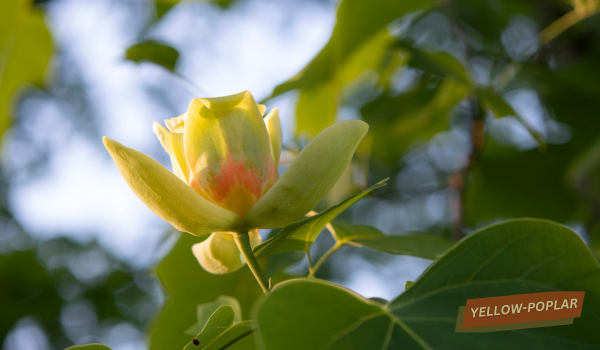
Yellow-poplar
Yellow-poplar (a.k.a. tulip poplar) is the official state tree of Tennessee (and Kentucky) and was chosen “because it grows from one end of the state to the other” and “was extensively used by the pioneers of the state to construct houses, barns and other necessary farm buildings.” This tree is member of the magnolia family and is the tallest eastern hardwood tree, reaching heights of up to 160 feet. It’s large tulip-like flowers, which bloom in the spring, produce nectar and pollen which attract bees, butterflies and hummingbirds, making it important for the survival of pollinators.
For centuries, the yellow-poplar has been used by Native American tribes for its medicinal qualities, such as treating fevers, coughs and digestive issues. In early American history, the wood of the yellow-poplar was used extensively for construction because of its strength and resistance to rot. In the past, its bark was also used for tanning leather. Today, yellow-poplar wood can also be used for plywood, veneer and pulpwood, and is among the many timber species that help give the South its nickname as the “wood basket of the world.”
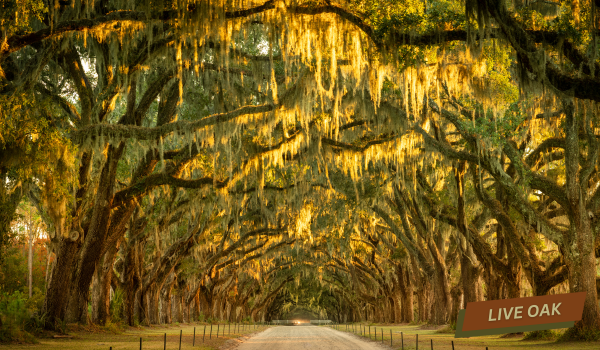
Live Oak
These majestic trees can live for centuries and are often associated with iconic southern living – perhaps recalling classic southern wraparound porches shaded by the sprawling branches of a great live oak. Live oaks are also a symbol of resilience, having withstood hurricanes, droughts and other natural disasters common to the region. In fact, many communities in the Southeast feature a landmark “survivor oak” that has weathered such storms. The large, expansive branches of these trees can also provide shade and cool microclimates, which can be especially important in urban areas where pavement and buildings can create heat islands.
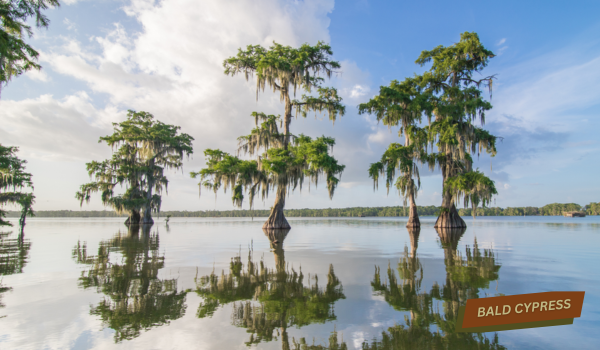
Bald Cypress
The bald cypress is another iconic tree of the Southeast, found in the swamps and wetlands of the region. So called because it sheds its needles in the fall to reveal bare branches, the bald cypress has distinctive projections, called “knees,” which rise from its roots to anchor the tree in the soggy soil and capture oxygen. You’ll often catch a glimpse of bald cypress along the water’s edge – the trees having an inextricable association with the South’s lakes and winding rivers. Bald cypress wood is highly valued for its durability and resistance to decay, making it ideal for use in construction and boat building. The bald cypress also has cultural significance for Native American tribes in the Southeast, who used the tree’s bark for medicinal purposes. The species has a notable longevity with some recorded specimens over 2,600 years old.
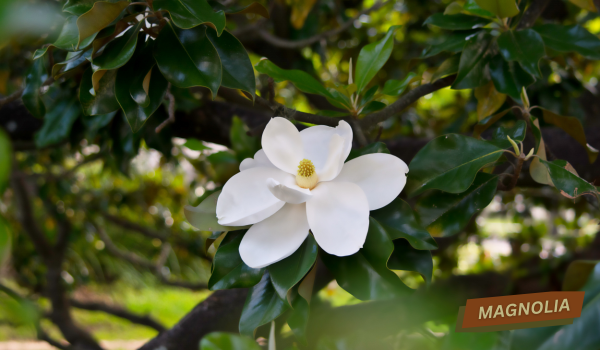
Magnolia
In addition to its practical uses, the southern magnolia is a symbol of hospitality and southern charm and is the state tree of Mississippi. The tree’s glossy, evergreen leaves and large, showy flowers are ever present in southern landscaping and architecture and have become an iconic image of the region’s beauty and elegance. The Southern magnolia has also been featured in literature and art, including in the works of southern writers such as William Faulkner and Eudora Welty, and in the paintings of southern artists such as Walter Anderson and William Woodward.
Historically, the Southern magnolia has been used for a variety of purposes including furniture and construction. Various parts of the Southern magnolia tree have also been used in traditional medicine for a variety of ailments. Native Americans used magnolia bark to treat a range of conditions, including fever, pain, digestive problems, skin conditions and wounds. The bark contains several compounds that are believed to have medicinal properties, including magnolol and honokiol, which have been shown to have potential in treating a range of conditions, including cancer, Alzheimer’s disease and anxiety.
Our southern trees are more than just part of the landscape – they are symbols of the region’s history and identity. Overall, the cultural heritage of trees in the southeastern United States is a complex and multifaceted topic, with economic, cultural, ecological and social dimensions. By understanding and appreciating the many roles that trees play in our lives, we can work to conserve, protect and enhance these valuable resources for future generations. To learn more about trees and forests near you, contact your local state forestry agency.